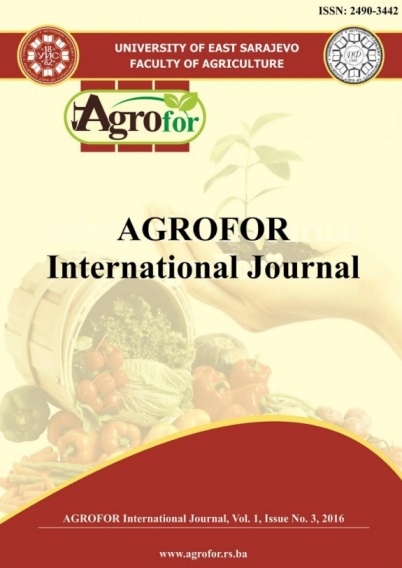IMPACT OF LAND SIZE ON PRODUCTIVITY, INCOME AND PROFITS FROM PEPPER CULTIVATION IN SRI LANKA
DOI:
https://doi.org/10.7251/AGRENG1603127SAbstract
Pepper is an important spice crop grown in Matale District of Sri Lanka, for
exports and domestic consumption. Varieties of pepper grown are Sri Lankan local
variety and ‘Panniyur’. Pepper production had shown variations over the years due
to poor management and low productivity. This study analyzed and compared the
production levels and costs, income and profitability of pepper cultivation among
small and large scale pepper farmers. A stratified random sample of 120 farmers,
consisting of 76 small famers (<5 acre farms) and 44 large farmers (>5 acre farms)
were selected for study. A pre-tested questionnaire was used for data collection.
Descriptive statistics and mean comparisons were performed. The average extent
of land under pepper cultivation was significantly different (P<0.01) with 3.49
acres for small farms and 8.85 acres for large farms, and 66% of lands were under
local pepper varieties. Fertilizer was the only input applied by both group of
farmers. The mean yield of pepper was 636 kgs and 560 kgs per acre for small and
large farms respectively and did not differ significantly. Mean comparison showed
that there was a significant difference (P<0.01) in cost of production, income from
pepper sales and profits from pepper between small and large farmers. There were
no significant differences in farm gate prices received for raw and processed
pepper by small and large scale farmers. It can be concluded that there is
significant differences between small and large scale pepper farmers in the extent
cultivated, incomes received, cost of production and profits earned, while there is
no differences in the prices received for raw and processed pepper.

